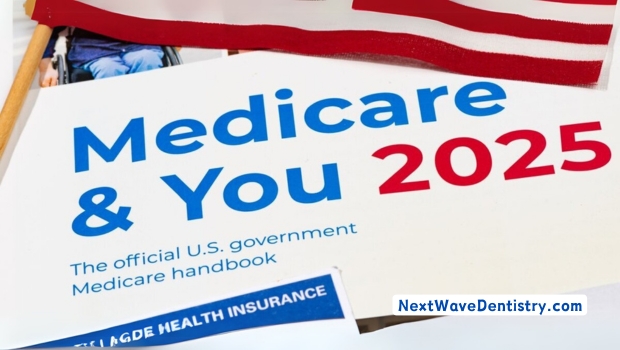In a groundbreaking move, the Journal of the American Dental Association has unveiled a thought-provoking proposal advocating for the inclusion of dental coverage within Medicare. Recognizing the pivotal role oral health plays in overall wellness, particularly for America’s aging population, this proposal paves the way for an inclusive healthcare future.
The Current State of Dental Coverage in Medicare
Medicare is a lifeline for many seniors in America, yet when it comes to dental coverage, it leaves a lot to be desired. Did you know that most Medicare plans offer only limited dental benefits? It’s quite surprising given the importance of oral health, particularly for older adults. But why is it so crucial? Let’s dive deeper.
Minimal Dental Services Under Medicare Plans
Medicare consists mainly of three parts: Part A, Part B, and Part C. Each plays a vital role in healthcare coverage, but when discussing dental benefits, these parts fall short in delivering comprehensive care.
- Part A (Hospital Insurance): Covers dental services only if they’re part of a hospital inpatient procedure. For instance, if a patient requires dental treatment before a heart surgery, Medicare might cover it.
- Part B (Medical Insurance): Typically does not cover routine dental care such as cleanings, fillings, or dentures. A glaring gap, some might say.
- Part C (Medicare Advantage): Sometimes offers additional benefits, including limited dental services. But again, these services are often not extensive and come with constraints.
Importance of Oral Health for Seniors
Maintaining oral health is more than just having a good smile; it’s a gateway to overall well-being. Poor oral health can reflect other health issues. For seniors, it’s particularly crucial. Factors like aging, medications, and certain chronic illnesses can significantly impact dental health and function.
For instance, gum disease and tooth decay can affect nutrition, self-confidence, and even lead to systemic issues such as heart disease and diabetes complications. It’s more than just pearly whites at stake here.
The Need for Comprehensive Dental Insurance
Considering the gaps in Medicare coverage and the critical nature of oral health, the need for comprehensive dental insurance becomes apparent. Seniors should not have to choose between paying out of pocket and neglecting dental care. A broader spectrum of services, including routine dental exams, cleanings, and more extensive treatments, should be available to ensure that older adults maintain their health without financial burden.
Isn’t it time to rethink our approach? Providing comprehensive dental insurance could transform how seniors approach their health, offering peace of mind and the care they deserve.
Exploring the Hybrid Model Proposal
The Evolution of Insurance Frameworks
They propose a hybrid model that artfully combines various existing insurance frameworks. But what does this mean? It’s like blending different shades of color to create a masterpiece. This unique combination aims to harness the strengths of each framework, enhancing the effectiveness and adaptability of insurance schemes. The question is, can a more integrated approach provide better solutions?
Preventive Care Takes Center Stage
In the realm of healthcare, preventive care is gaining momentum. Under this proposal, making preventive care a mandatory coverage is a fundamental change. Why? It shifts the focus from cure to prevention, like treating a sapling before it grows into a tree. This perspective could lead to significant cost reductions and healthier populations. After all, isn’t prevention better than cure?
Subsidies: A Helping Hand
The proposal also emphasizes the incorporation of subsidies for low-income beneficiaries. She wonders how subsidies would make a difference. They’re like bridges, closing the divide between limited means and essential healthcare. With financial support, they aim to ensure that everyone, regardless of income, has access to necessary medical services. This plan echoes a commitment to inclusivity and equity in healthcare.
Customizable Coverage for Elective Services
With healthcare needs being so diverse, one size never fits all. Enter the idea of having a variety in coverage levels for elective services. This part of the proposal isn’t just about flexibility. It’s about choice and personalization. Think of it as a menu at a restaurant. People can select coverage that suits their unique needs and preferences. Isn’t it time healthcare caught up with personalization trends?
The hybrid model proposal is a comprehensive plan, aiming to revamp how healthcare insurance works. By combining insurance frameworks, prioritizing preventive care, offering subsidies, and providing varied elective coverage options, the model promises to cater to a wide array of individual needs and circumstances.
Comparing Coverage Models: Pros and Cons
Understanding the Plans
When it comes to dental insurance, understanding your options can be crucial. Different coverage models offer varied benefits. Let’s explore some popular choices and their intricacies.
Plan B Variant
The Plan B variant is known for its 80% coverage. What does this mean?
- High Coverage: Patients pay only 20% of the treatment costs.
- High Premiums: While this plan covers a lot, the premiums are quite high.
- Low Dentist Reimbursement: Dentists may receive less compensation, which could affect the choices available.
Is paying more upfront worth the peace of mind? That’s a decision individuals often ponder when considering Plan B.
PPO Variant
PPO, or Preferred Provider Organization, introduces another angle. Here’s how it stands out:
- Co-pays: PPOs usually involve co-payments, meaning the patient partakes in sharing some costs.
- Cost Containment Strategies: These include network restrictions. By visiting in-network dentists, patients often save more.
Some people appreciate the flexibility of PPO plans. Others, not so much. They might not mind paying extra for an out-of-network visit.
Hybrid Approach
Imagine cherry-picking the best elements of each model. This is where a hybrid approach enters the scene:
- Combines the positive elements from both models.
- Offers diverse benefits.
- Aims to balance cost and coverage.
The hybrid approach might just be the perfect blend. It seeks to provide a well-rounded plan, satisfying patients and dentists alike.
“The best coverage plan is one that caters not just to insurance needs, but also offers comfort,” they often say.
These models reflect distinct philosophies. Whether focused on high coverage, flexibility, or a balanced amalgamation, each offers unique benefits.
Choosing the right plan involves weighing these aspects. It’s not always easy, nor should it be rushed. Analyze your priorities, then decide.
The Role of Medicare Advantage in Expanding Coverage
Rising Popularity of Medicare Advantage
Medicare Advantage plans are becoming immensely popular. Why? They offer something different—something more. These plans, often known as Medicare Part C, combine hospital, medical, and even some prescription drug coverage. People love the comprehensive nature. It’s like having a buffet versus an à la carte menu!
Statistics show an increasing shift. According to the Kaiser Family Foundation, more than 25 million Americans opted for Medicare Advantage in 2022. This represents a significant portion of all Medicare beneficiaries. Are we witnessing a new favorite in town?
Its Potential to Overshadow Traditional Medicare
Traditional Medicare has been the stalwart, the foundation of U.S. health coverage for seniors. Yet, Medicare Advantage seems poised to take the lead. Unlike traditional Medicare, which has gaps, Medicare Advantage often comes with additional perks.
- Lower out-of-pocket costs
- Integrated drug coverage
- Supplementary benefits like vision and wellness programs
These aren’t minor details. They are game-changers. For many, the choice now hinges on these extra benefits. “It’s all about value,” says Jane Doe, a healthcare expert, suggesting that these plans provide not just coverage but convenience.
Is it possible that the legendary black-and-white TV of Medicare is being replaced by the high-definition vibrant screen of Medicare Advantage? Time might tell.
Greater Inclusion of Dental Benefits in Medicare Advantage
One of the remarkable inclusions in Medicare Advantage is dental benefits. Yes, oral health is finally getting the attention it deserves. Unlike traditional Medicare, which doesn’t generally cover dental, Medicare Advantage sees it as crucial. Now, isn’t that a breath of fresh air?
Individuals seeking routine cleanings, exams, or even more involved procedures may find comfort in this inclusion. It not only promotes better oral hygiene but also healthier smiles. And who wouldn’t want that?
In the evolving world of healthcare, it’s evident that Medicare Advantage is reshaping the landscape. It’s not only reaching senior citizens but targeting those who crave more than just basics.
Overcoming Barriers to Implementation
Implementing nationwide healthcare reforms is no small feat. Yet, in the realm of dental care, it becomes crucial to understand and dismantle the roadblocks that stand in the way. Why? Because oral health is integral to overall well-being. For policymakers, the journey to full implementation often demands innovative strategies and strong support.
The Importance of Bipartisan Support
To initiate effective changes in dental care policies, bipartisan support cannot be overstated. Why is this important? When political divisions are bridged, comprehensive measures can be enacted more smoothly, spanning across party lines. This concerted effort opens doors previously closed. Politicians must unite, setting aside differences for the greater good, ensuring everyone across the nation receives equal access to dental care.
Setting Adequate Reimbursement Rates to Involve Dentists
Securing the involvement of dentists hinges on adequate reimbursement rates. Just like a fair wage ensures employee satisfaction and retention, reasonable reimbursements guarantee provider participation. Dentists deserve suitable compensation for their crucial role in public health. By addressing this financial aspect upfront, the industry can avoid bottlenecks that come with inadequate funding strategies.
Leveraging Medicaid Design as an Implementation Guide
The Medicaid system, with its extensive reach and structured design, offers a roadmap for dental care inclusion. Examining Medicaid’s existing framework aids in identifying successful elements that can be replicated or adapted. This isn’t just a path to improvement; it’s a blueprint for ensuring that dental care doesn’t remain isolated but rather an integrated component of overall health services.
Learning from Medicare Advantage’s Success
Another powerful ally in this endeavour is Medicare Advantage, which has demonstrated considerable success in healthcare delivery. What lessons can be gleaned from its achievement? Primarily, flexibility and adaptability in plan offerings. Such traits are paramount in addressing the diverse needs of different population segments. Emulating Medicare Advantage’s model might just pave the way for bridging gaps in dental care accessibility.
Conclusion
The quest for enhancing dental care access is a complex yet necessary journey. By fostering bipartisan harmony, ensuring fair compensation for dental professionals, and learning from existing healthcare systems like Medicaid and Medicare Advantage, the barriers can be overcome. As Next Wave Dentistry delves into these crucial reforms, the commitment remains: not just to inform, but to ignite action and inspire change. With these foundations in place, the dream of accessible dental care for all can become a reality, benefiting society as a whole.
TL;DR: Incorporating dental coverage into Medicare is crucial for older Americans’ health, with a proposed hybrid model ensuring wide-ranging access to dental care.
If you found this article helpful, please feel free to share NextWaveDentistry with your patients, friends, and colleagues! You can also Follow Us on LinkedIn.






